Tokyo 2020 Olympic road race and time trial courses
Men will tackle the slopes of Mount Fuji in the road race and the time trials will provide a lumpy parcours


The Tokyo 2020 Olympic Games road race and time trial courses provide a tough test for the riders aiming to take a career-defining Olympic gold medal.
The men's road race, at 234km, is a feast of climbing with almost 5000m of vertical ascent to take on.
The women's road race, at 137km, is significantly shorter but still packs in a significant amount of climbing for the distance, with around 2700m of ascent.
All events will feature backdrops of Mount Fuji, but controversially only the men's road race will climb the lower slopes of Japan's highest mountain.
The time trial courses, out and back from the Fuji International Speedway, are exactly the same for the both the men's and women's races, however the men take on two laps of the 22.1km circuit while the women complete only one lap.
Riders will not only have to battle the testing courses, but also the weather. The current temperature in Oyama, Shizuoka - the location of the Fuji International Speedway - is around 30 degrees in the middle of the day with a humidity of 77%.
Both road races should see star-studded line ups, as should the time trial events.
Get The Leadout Newsletter
The latest race content, interviews, features, reviews and expert buying guides, direct to your inbox!
The road races will see the defending champions from 2016 return, with Anna van der Breggen representing the Netherlands for the final time at the Games before she retires, and Greg Van Avermaet amongst a strong Belgian line-up.
We'll certainly new champions in the time trials, with respective winners Kristin Armstrong (USA) and Fabian Cancellara (Switzerland) both long retired from professional cycling.
Tokyo 2020 Olympic road race: men's course
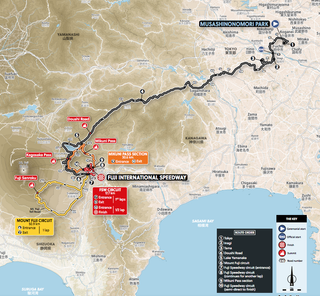
Tokyo 2020 Olympic road race route profile

Tokyo 2020 Olympic road race route profile
The 234 kilometre race departs from the Musashinonomori Park, with a 10km neutral zone before routing west via the Kagosaka Pass, passing through Kanagawa, Yamanashi and Shizuoka.
The route - which accumulates 4865 metres of climbing - then heads off for the 'Mount Fuji Circuit', which sees riders take on the lower slopes of the beast which attracts thousands of climbers every year.
On return, they'll pass the spectacular Lake Yamanakako, using popular cycling routes.
Charging into the Fuji International Speedway racetrack, which will host the finish, riders will complete a short lap before moving on to the Mikuni Pass section. The 6.8km climb averages at 10.2 per cent, with sections at 12.6 per cent en route to the 1159 metre peak.
The next logical step is a long descent, which is followed by fairly flat terrain before the racers hit the Speedway circuit for the third and final time.
Tokyo 2020 Olympic road race: women's course


The women's 137km race bypasses the Mount Fuji climb and the Mikuni Pass is excluded as well. This proved to be a highly controversial decision, with many riders voicing their discontent.
Whist the route profile misses some of the tantalising spikes in elevation that we see on the men's, the 137km loop still contains a notable degree of elevation - at 2692 metres of climbing.
Like the men's event, riders begin in Japan's metropolitan area, climbing the Doushi Road and Kagosaka Pass. The peloton then descends to the Fuji International Speedway, completing one lap before the finish.
Tokyo 2020 Paralympic road race course
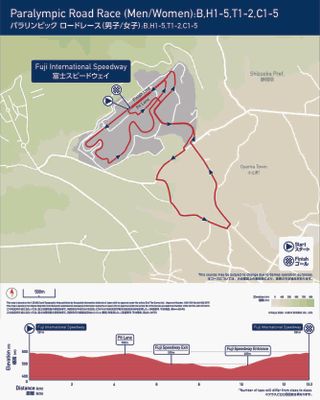
Paralympic athletes will use a 13.2 km lap, which makes a feature of the Fuji Speedway motor circuit.
The terrain looks to be rolling but not mountainous, and the number of laps will vary depending upon the rider's class of competition and gender.
Commenting on the release of the route, 14-time Paralympic champion Dame Sarah Storey said: “I am excited to see the road race courses released for the Tokyo Paralympic Games with just under two years to go. It’s the first time Paracyclists have had a notice period of this length and it will assist everyone greatly with their preparations.
"Just like the Olympic Games, the courses use the Fuji Speedway which is another first in providing parallel opportunity and exposure at the Paralympic Games.
"The courses themselves will provide an all-round challenge to riders and will suit a tough all-round rider, meaning races are likely to be wide open and preparations will be key.”
Tokyo 2020 Olympic time trial routes
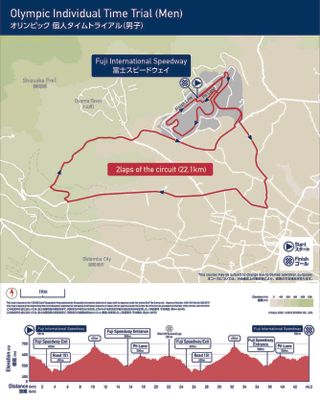
The men's and women's time trial courses, 44.2km and 22.1km respectively, share the same loop though the men will complete two laps.
The 22.1km lap contains 423 metres of climbing, starting with a descent, followed by a tough incline, with more downhill before a more gradual upwards slope.
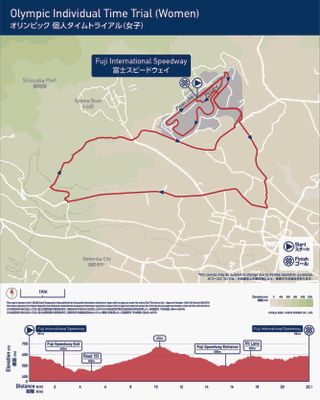
The course starts and ends at the Fuji Speedway motor racing circuit which hosts the finish of both road races, and the organisers promise a scenic backdrop in the shape of the familiar Mount Fuji.
Tokyo 2020 Paralympic time trial course
The course for the Paralympic time trial events looks to be significantly flatter than the Olympic routes, though the terrain is still rolling.
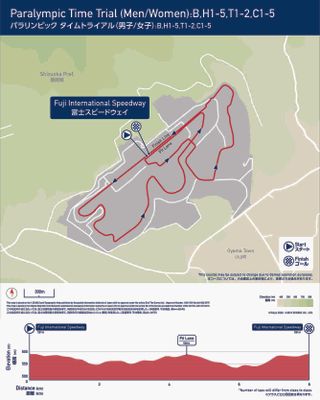
Classes B, H1 to 5, T1 and 2 and C1 to 5 will compete on an 8km lap, which starts and finishes at the Fuji Speedway circuit, with Mount Fuji again looming in the backdrop.
In the team relay events, classes H1 to 5, will ride a 2.7km lap, with three athletes per team completing three laps each.

Thank you for reading 20 articles this month* Join now for unlimited access
Enjoy your first month for just £1 / $1 / €1
*Read 5 free articles per month without a subscription

Join now for unlimited access
Try first month for just £1 / $1 / €1
Michelle Arthurs-Brennan the Editor of Cycling Weekly website. An NCTJ qualified traditional journalist by trade, Michelle began her career working for local newspapers. She's worked within the cycling industry since 2012, and joined the Cycling Weekly team in 2017, having previously been Editor at Total Women's Cycling. Prior to welcoming her daughter in 2022, Michelle raced on the road, track, and in time trials, and still rides as much as she can - albeit a fair proportion indoors, for now.
-
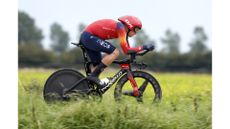 Overachiever: Cameron Wurf competed in the Amstel Gold, La Flèche Wallonne and an Ironman, all in just eight days
Overachiever: Cameron Wurf competed in the Amstel Gold, La Flèche Wallonne and an Ironman, all in just eight daysCameron Wurf is both a member of Team Ineos Grenadiers and an accomplished professional long course triathlete who has racked up numerous World Tour and Ironman race finishes across his career.
By Kristin Jenny Published
-
 The tech nerd's guide to the perfect coffee
The tech nerd's guide to the perfect coffeeJoe on Joe. What does it take to make a fine mug of Joe? We sent Joe Baker to find out.
By Joe Baker Published